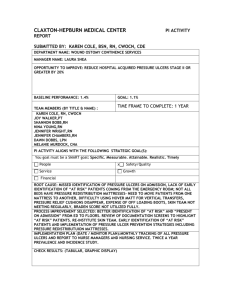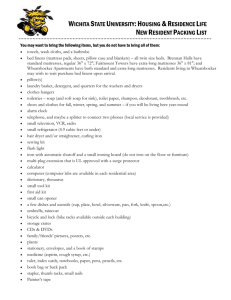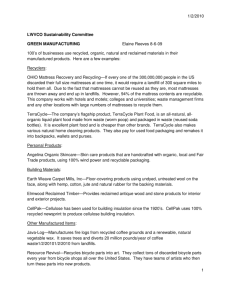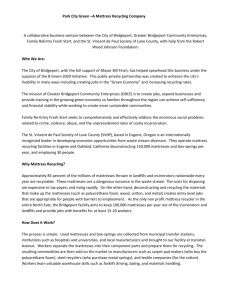How to cut hospital costs? Better mattresses AUGUST 18, 2011
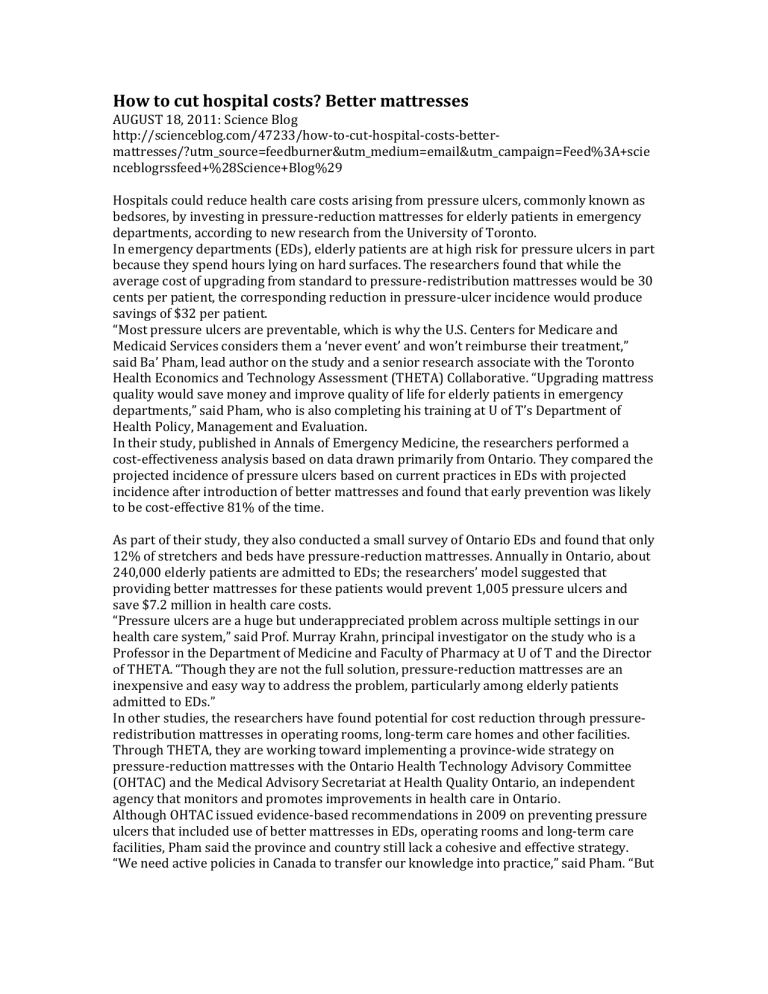
How to cut hospital costs? Better mattresses
AUGUST 18, 2011: Science Blog http://scienceblog.com/47233/how-to-cut-hospital-costs-bettermattresses/?utm_source=feedburner&utm_medium=email&utm_campaign=Feed%3A+scie nceblogrssfeed+%28Science+Blog%29
Hospitals could reduce health care costs arising from pressure ulcers, commonly known as bedsores, by investing in pressure-reduction mattresses for elderly patients in emergency departments, according to new research from the University of Toronto.
In emergency departments (EDs), elderly patients are at high risk for pressure ulcers in part because they spend hours lying on hard surfaces. The researchers found that while the average cost of upgrading from standard to pressure-redistribution mattresses would be 30 cents per patient, the corresponding reduction in pressure-ulcer incidence would produce savings of $32 per patient.
“Most pressure ulcers are preventable, which is why the U.S. Centers for Medicare and
Medicaid Services considers them a ‘never event’ and won’t reimburse their treatment,” said Ba’ Pham, lead author on the study and a senior research associate with the Toronto
Health Economics and Technology Assessment (THETA) Collaborative. “Upgrading mattress quality would save money and improve quality of life for elderly patients in emergency departments,” said Pham, who is also completing his training at U of T’s Department of
Health Policy, Management and Evaluation.
In their study, published in Annals of Emergency Medicine, the researchers performed a cost-effectiveness analysis based on data drawn primarily from Ontario. They compared the projected incidence of pressure ulcers based on current practices in EDs with projected incidence after introduction of better mattresses and found that early prevention was likely to be cost-effective 81% of the time.
As part of their study, they also conducted a small survey of Ontario EDs and found that only
12% of stretchers and beds have pressure-reduction mattresses. Annually in Ontario, about
240,000 elderly patients are admitted to EDs; the researchers’ model suggested that providing better mattresses for these patients would prevent 1,005 pressure ulcers and save $7.2 million in health care costs.
“Pressure ulcers are a huge but underappreciated problem across multiple settings in our health care system,” said Prof. Murray Krahn, principal investigator on the study who is a
Professor in the Department of Medicine and Faculty of Pharmacy at U of T and the Director of THETA. “Though they are not the full solution, pressure-reduction mattresses are an inexpensive and easy way to address the problem, particularly among elderly patients admitted to EDs.”
In other studies, the researchers have found potential for cost reduction through pressureredistribution mattresses in operating rooms, long-term care homes and other facilities.
Through THETA, they are working toward implementing a province-wide strategy on pressure-reduction mattresses with the Ontario Health Technology Advisory Committee
(OHTAC) and the Medical Advisory Secretariat at Health Quality Ontario, an independent agency that monitors and promotes improvements in health care in Ontario.
Although OHTAC issued evidence-based recommendations in 2009 on preventing pressure ulcers that included use of better mattresses in EDs, operating rooms and long-term care facilities, Pham said the province and country still lack a cohesive and effective strategy.
“We need active policies in Canada to transfer our knowledge into practice,” said Pham. “But
I expect change will happen, because the burden of pressure ulcers is so high and investing in better mattresses is virtually a one-time change.”


